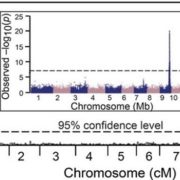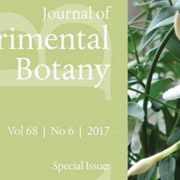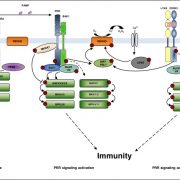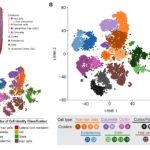Default activation and nuclear translocation of the plant cellular energy sensor SnRK1 ($) (Plant Cell)
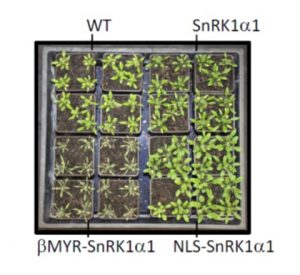 When I’m using my laptop without it being plugged in, at some point it enters battery saving mode as it senses that the battery charge is getting low. Organisms also sense their low energy reserves and activate alternate metabolic processes to ensure survival. The core energy sensor is a hetero-trimeric complex conserved in eukaryotes (yeast, animals, plants). Ramon et al. investigated the regulation of this sensor, which in plants is called SnRK1. In animals and fungi, the energy-conserving pathways are off until activated. By contrast, the authors found that in plants energy-saving pathways are ON, unless repressed. This different strategy was correlated with key differences the structure and regulatory control of the catalytic α-subunit, including default activation and regulated nuclear translocation. Altering SnRK1 activity affected downstream gene activation as well as the plant’s growth pattern. (Summary by Mary Williams) Plant Cell 10.1105/tpc.18.00500
When I’m using my laptop without it being plugged in, at some point it enters battery saving mode as it senses that the battery charge is getting low. Organisms also sense their low energy reserves and activate alternate metabolic processes to ensure survival. The core energy sensor is a hetero-trimeric complex conserved in eukaryotes (yeast, animals, plants). Ramon et al. investigated the regulation of this sensor, which in plants is called SnRK1. In animals and fungi, the energy-conserving pathways are off until activated. By contrast, the authors found that in plants energy-saving pathways are ON, unless repressed. This different strategy was correlated with key differences the structure and regulatory control of the catalytic α-subunit, including default activation and regulated nuclear translocation. Altering SnRK1 activity affected downstream gene activation as well as the plant’s growth pattern. (Summary by Mary Williams) Plant Cell 10.1105/tpc.18.00500




